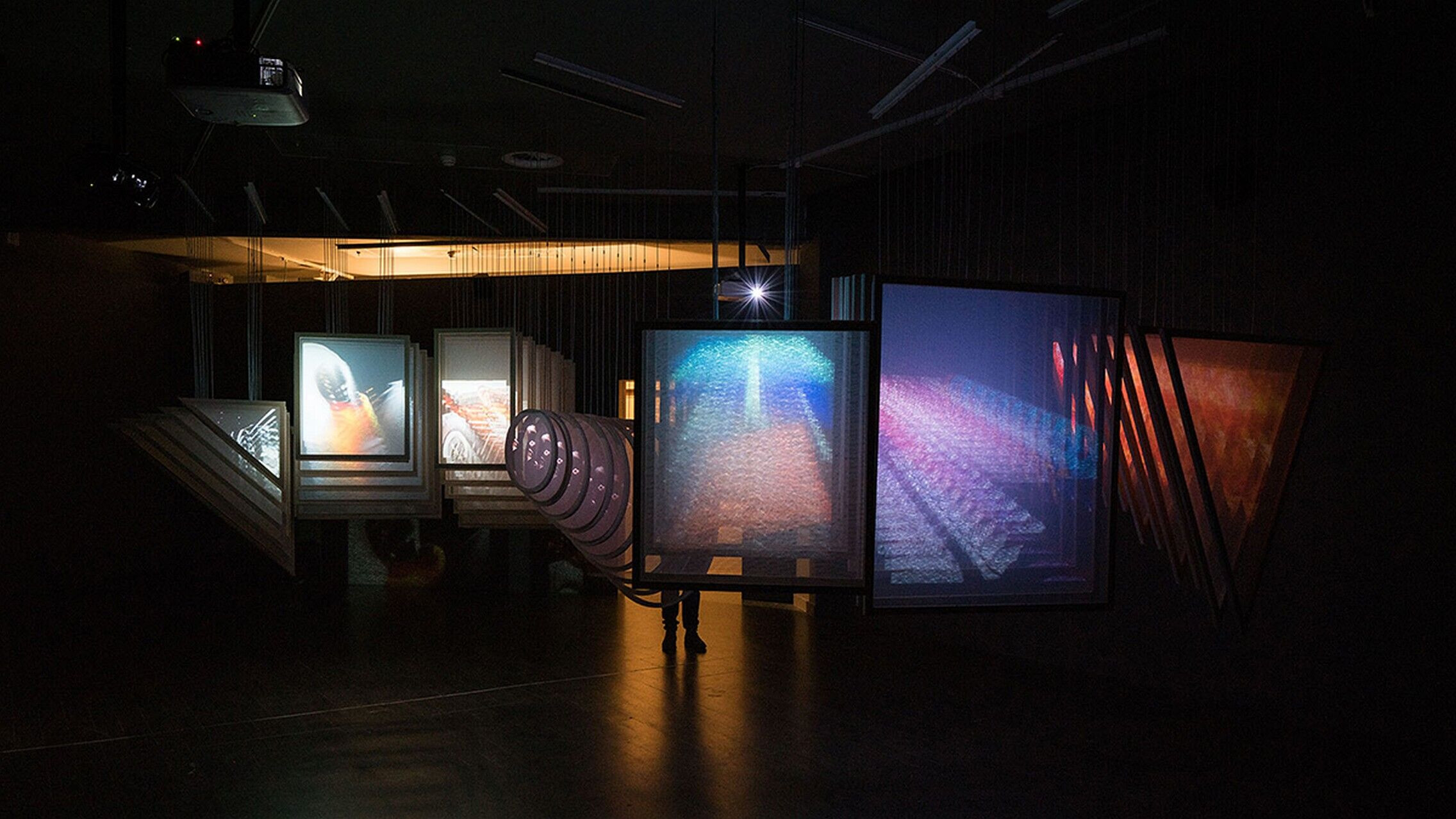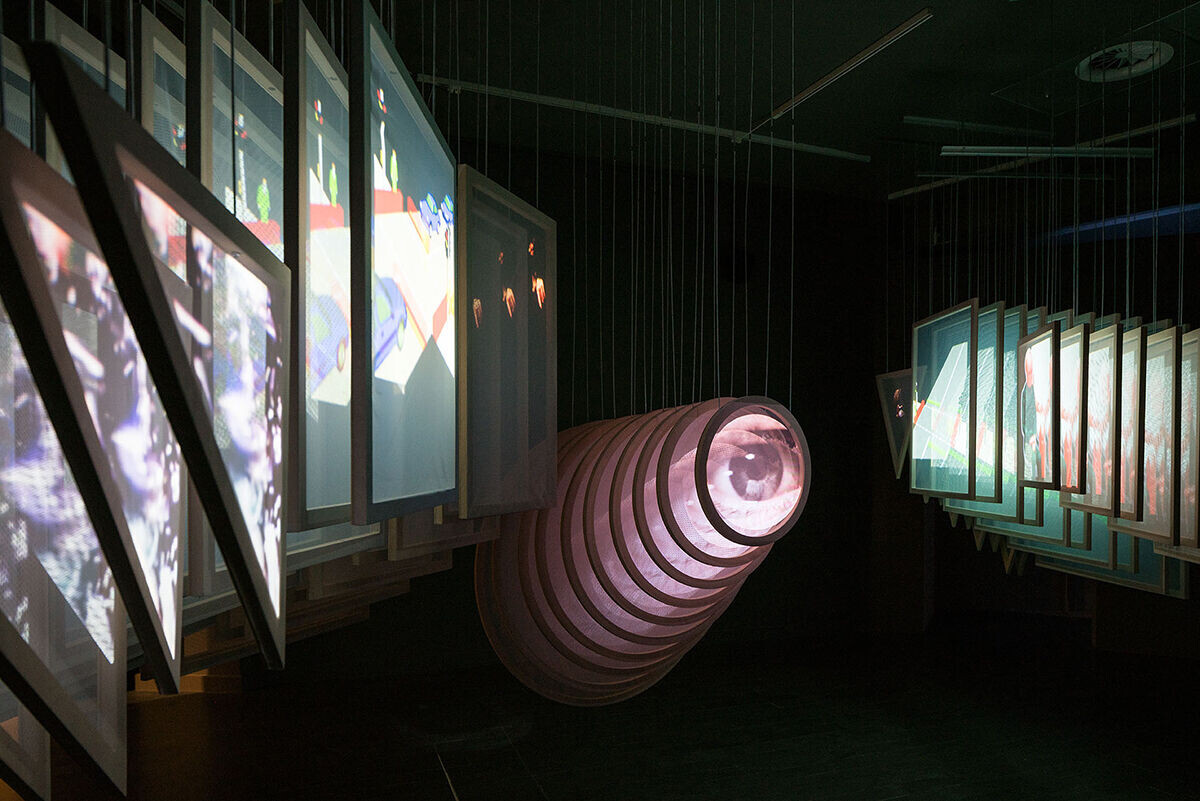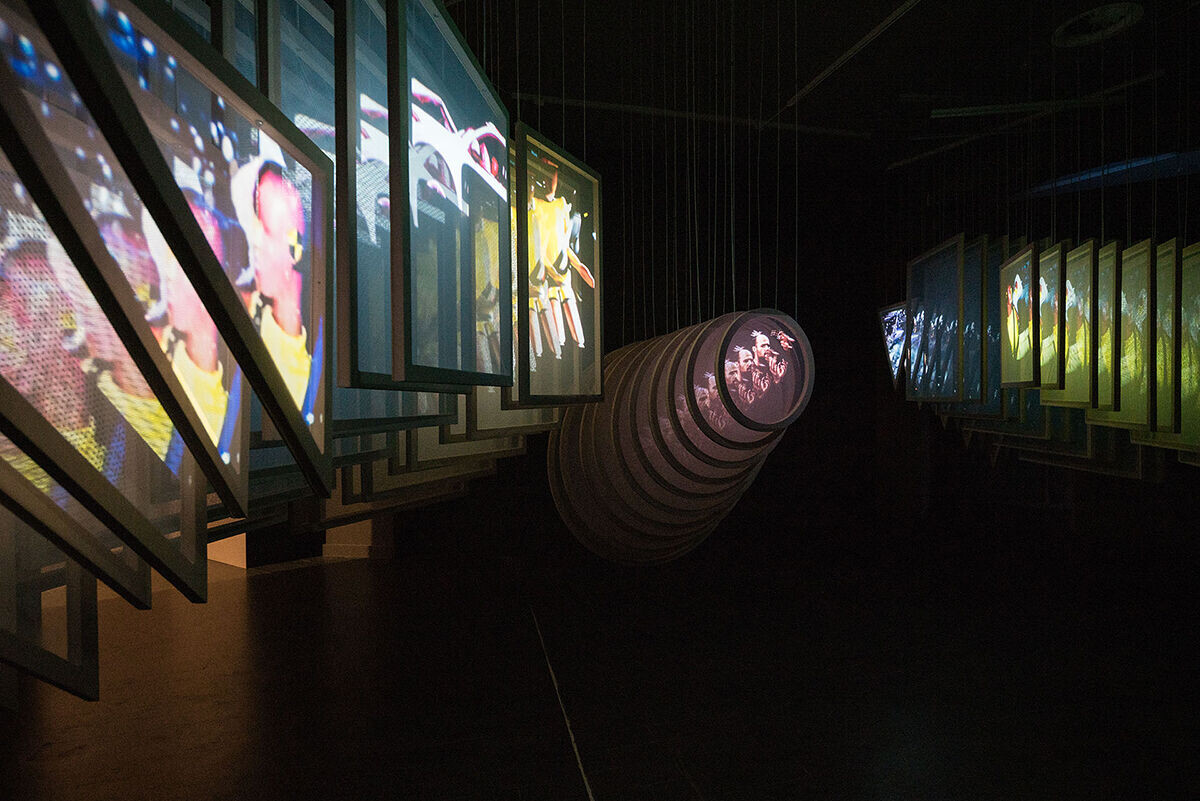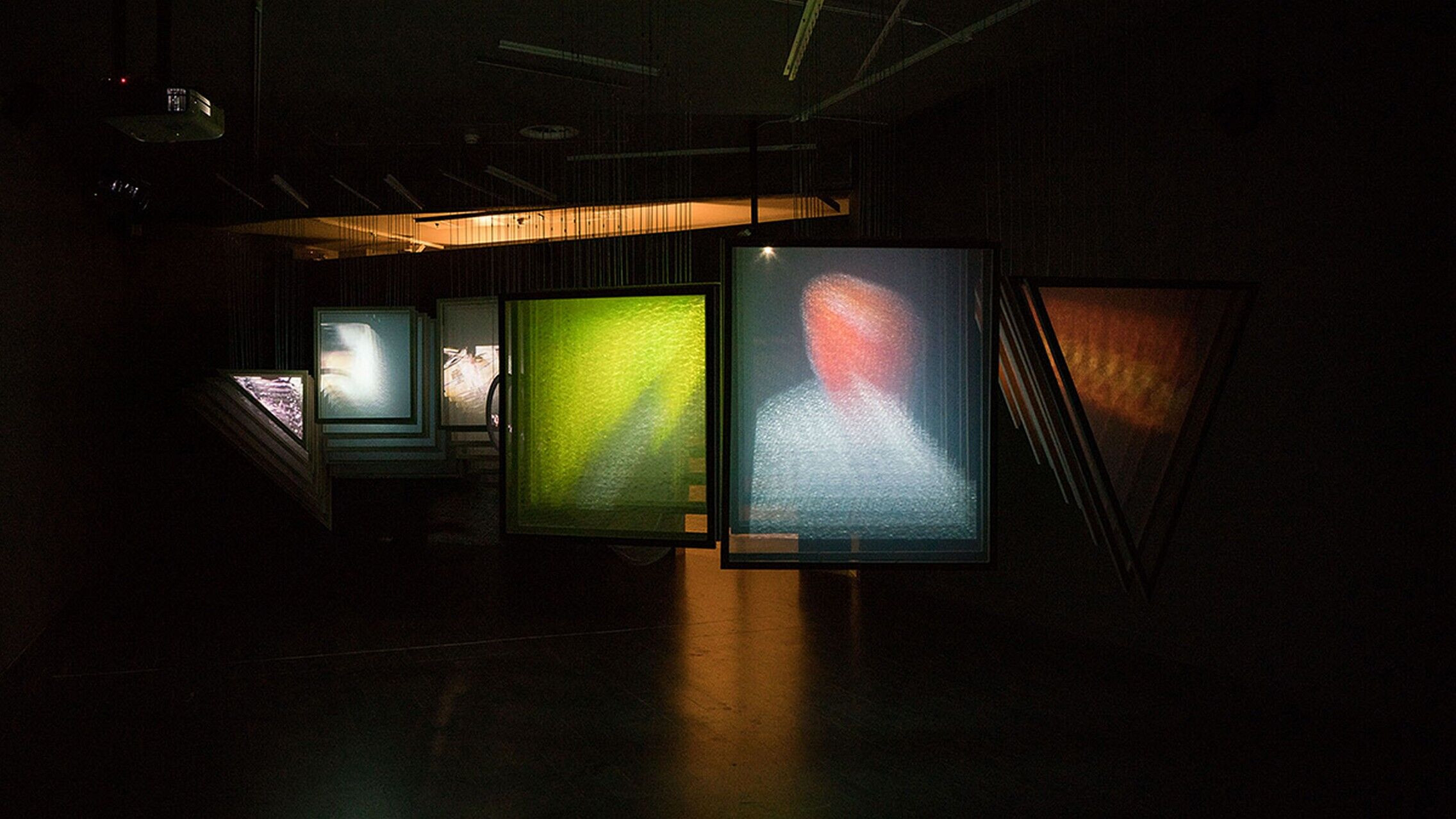Proposal for the ‘The voices of the GPS’ exhibition, in CentroCentro, Madrid
This project, developed by elii and choreographer Jonathan Martineu, studies the architectures of car crash test centres as locations where civility is designed.

Crash test centres are the setting where accidents are staged. In other words, they are spaces for performances, somewhere between a laboratory, a theatre and a film stage. These architectures are outfitted to represent everyday life: our bodies and their pathologies; our lives and their dangers; day-to-day life and the accidents that threaten it; the cost of anticipation and the price of mishaps; social roles and dissidences; the tolerable and intolerable aspects of our conducts; the discipline and lack thereof of our bodies. In short, they are spaces to portray a ‘good, common and pacified world’ and minimise its hazards.

The history of the evolution of crash tests is a history of the evolution of normativity, that is, of the ways in which it is considered that rules (driving codes, but also rules for cohabitation, security, civility, etc) need to be articulated. It would thus be possible to trace a history of social controversies through the ways in which hazards have been modelled in these spaces, the meanings that have been ascribed to ‘safe’, ‘suitable’, ‘convenient’ or ‘normal’. Therefore, these tests work mainly with social scripts and stereotypes. For instance, it took several decades for the tests to include female dummies (Susie was the first one of the Sierra range that had its own name). In fact, for a long time there were more types of dog-dummies than woman dummies.

Innovation technologies in crash test centres are forever evolving. Nowadays, research is heading in two main directions, which leads to a comprehensive rethinking of this representation device.
Firstly, experiments are moving towards a larger scale. Entire cities are being erected all around the world to test the latest technological solutions, based on artificial intelligence. Laboratories become cities and viceversa. Experiments reach an urban scale (such as K-City, in Korea, M City, in Michigan or the Applus+IDIADA Center, in Tarragona, among others) and materialise into a series or large-scale theatres or ghost towns, populated by crash test dummies that wander mechanically, zombie-like, through the streets, putting the economy of (in)security and the cohabitation models to the test.

On the other hand, crash test centres are also dematerialising. Advances in bio-fidelity (the increased closeness between the behaviour of dummies and the real human conditions, as defined by the EU) have transferred many experiments over to the virtual world. The reliability of the computer models means that an ever greater number of tests take place among screens and networks of hard disk drives. Dummies are turned into bits of data for models that are, paradoxically, more real as they get more virtual. The dummies then become ghosts that do not inhabit the crash test centres, but instead fill other spaces as binary codes and algorithms.
But…
…we found flaws in the system long ago…
…these accidents in the accidents have aroused our suspicion…
…Are they really mistakes?...
…Could they be part of the experiments?...
The question is whether these representations of life have become emancipated from the material supports. Whether biofidelity has made a virtual world independent. Whether artificial intelligence is competing against our understanding. ‘The ghosts of Susie Sierra’ invites us to dive into these phantasmatic, spectre-filled worlds to ask ourselves who the true object of the experiments in these laboratories is.[This project was created under the initiative of curators Paula García-Masedo and María Rogel. They invited a series of choreographers and architects to work together, in hybrid teams, in the exhibition entitled ‘The Voices of the GPS’. In this exhibition, the teams of architects and choreographers presented projects to reflect upon mistakes, dystopia and the failure of motorised life and road trips, using press cuttings as a basis].

1. The urban metabolism. Crash test centres participate of the social-technical network that manages flow circulations in urban spaces.
The architectures of urban metabolism.
2. The value of life. This is the testing ground for anticipation technologies, while designing industrial and economic products where the body is conceived as material for innovation.
Economy of catastrophe.
3. Designing civility. Crash test centres are spaces for performances, somewhere between a laboratory, a theatre and a film stage. These architectures are outfitted to represent everyday life.
The architectonics of the ‘good world in common’.

4. The risk in “normal”. It is possible to trace a history of social controversies through the ways of understanding ‘safety’ and the costs of ‘preserving’ life can be understood.
The history of the evolution of normativity and the intolerable.
5. City-theatres. Experiments are evolving towards a larger scale. The laboratory becomes a city. The city becomes a laboratory.
Urban theatres, ghost-cities.
6. Ghosts. The experiments have moved into the virtual world, amongst screens and networks of hard disk drives. The representation device has sublimated.
Dummies, spectres.
7. Principle of symmetry. These virtual bodies, managed by artificial intelligence, have become emancipated from their material supports. Biofidelity has become an independent phantasmatic world.
Who is the true object of the experiment?

Team:
Proposal: elii + Jonathan Martineu
Architects: elii - Uriel Fogué, Eva Gil, Carlos Palacios
Choreographer: Jonathan Martineu
Project-coordinating architect: elii - Lucía Fernández
Team: elii - Lucía Fernández + Ana López + Laura Barros + Telmo Sagartzazu
Curators: Paula García-Masedo + María Rogel
Assembly: Dypsa + Creamos Technology
Promoters: CentroCentro, Madrid
Photography: María Jerez + ImagenSubliminal (Miguel de Guzmán + Rocío Romero)
Video:María Jerez + ImagenSubliminal (Miguel de Guzmán + Rocío Romero)





























